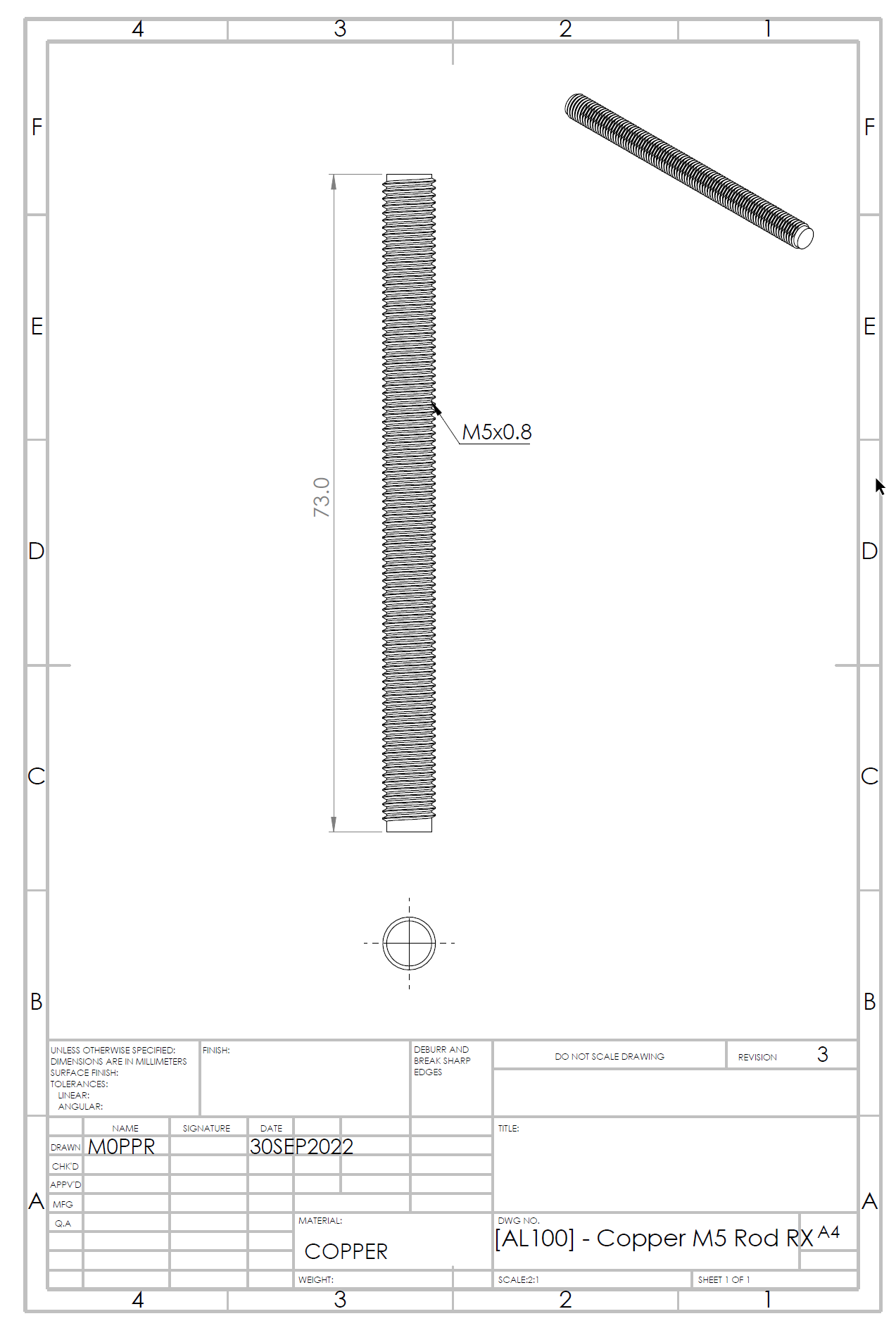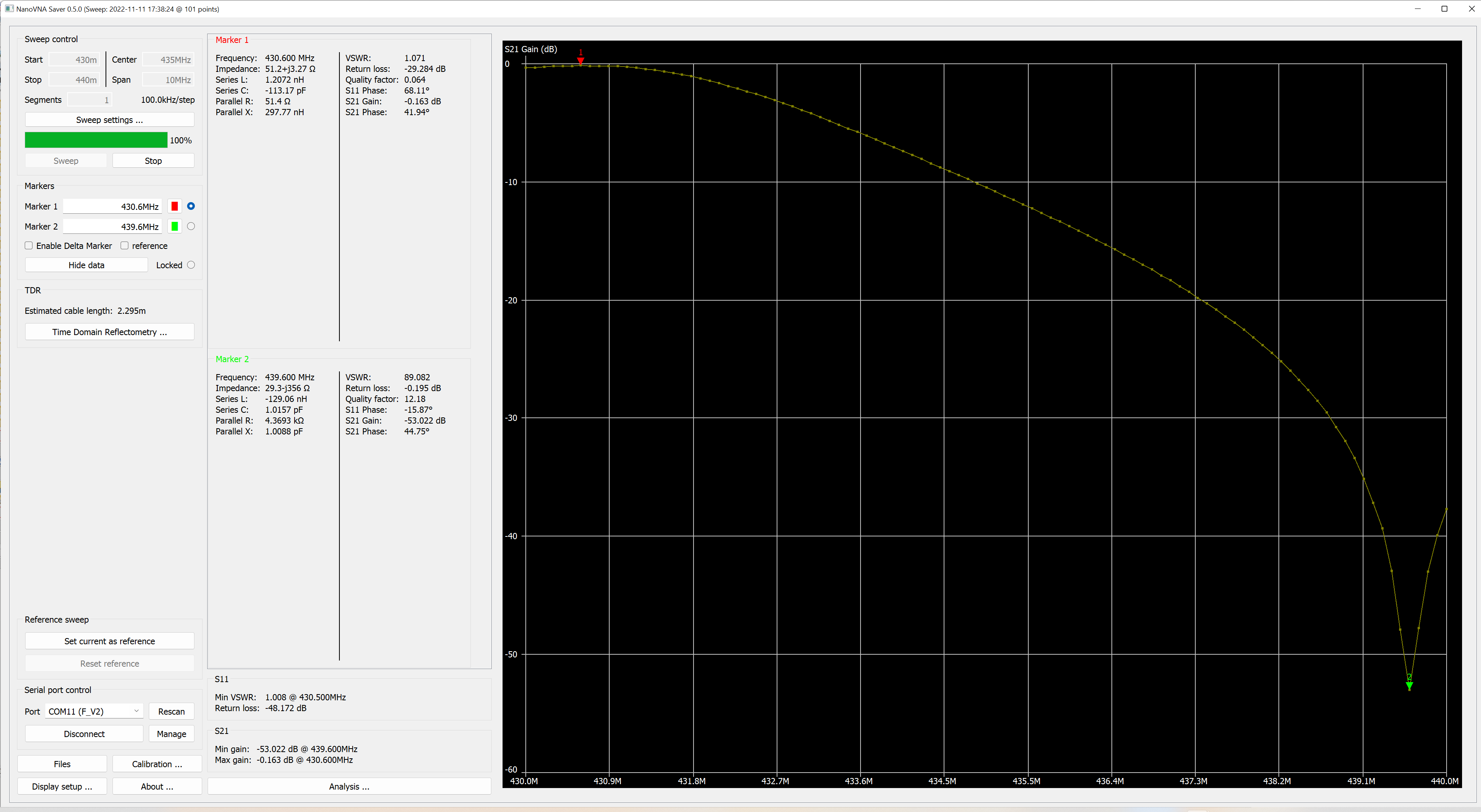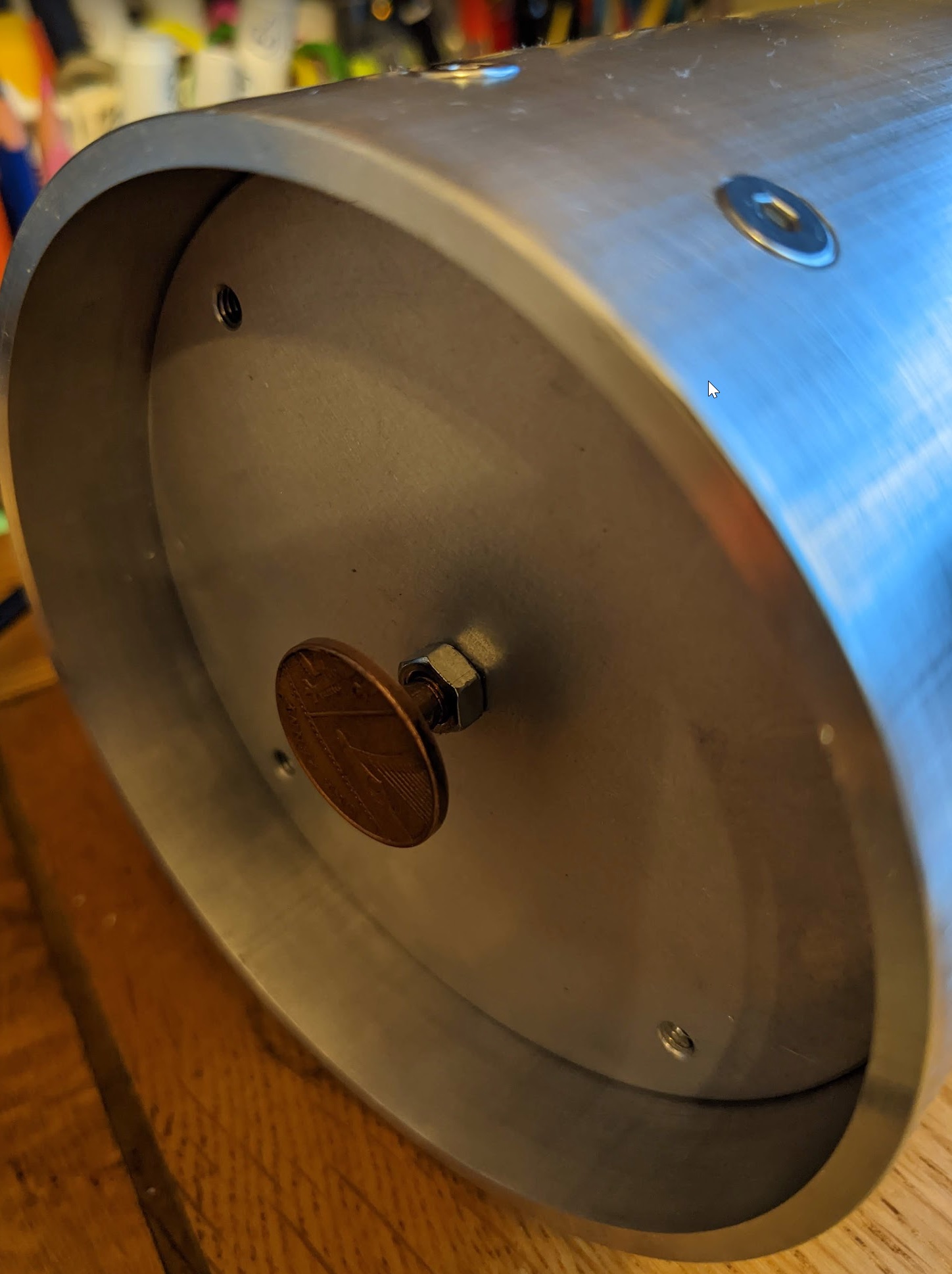Article below is a part of the assembly process of the UHF duplexer – main article is HERE.
Drawing below shows [AL100] – Copper M5 Rod RX


The M5 copper rod – it does a final tuning for the desired frequency – not for the notch (kind of…) – please read explanation below!!!
Also please note all RX and TX things refer to a standard offset for the repeater (minus offset on your radio). If your repeater uses reversed frequencies (plus offset on your radio) then you need to reverse everything what I said below 🙂
With no copper rod and the main conductor sticking out 161.5mm the resonance frequency is 432.600MHz***, so adding the rod inside of the cavity adds extra capacity and virtually increases the length of the conductor. In my case moving the rod 54mm inside of the duplexer cavity brought resonance frequency 432.600MHz down to 430.7125MHz.
*** I will probably soon add extra length to the conductor 1mm or 2mm to get the resonance closer to 430.7125 MHz
The desired frequency graph is not very sharp (see pic below) so I use the rod to tune the pass frequency and then I play with coil to get the notch frequency as accurate as I can.
Playing with the coil does NOT change the pass frequency – coil sets up ONLY the offset of the notch from the resonance frequency! If the main frequency moves, the notch mover together with it – when main conductor length changes (in our case it is fixed) or when the tuning rod moves.
So then I do the very final tuning for the notch (!) using the copper rod again – yes, it changes the pass frequency, but as you can see below the pass frequency is not very sharp at all, so it does not really matter, however it is much easier than doing the final tuning using just the coil!


